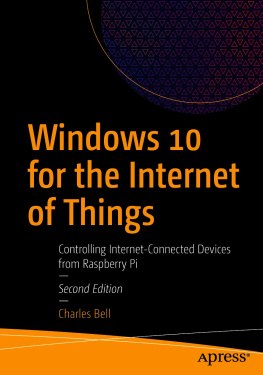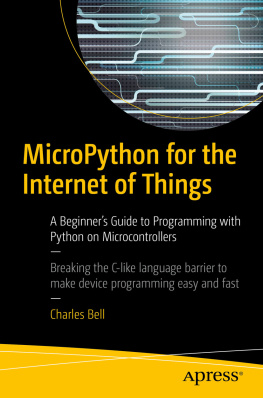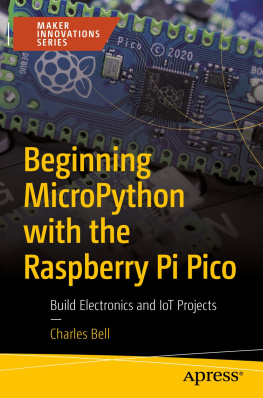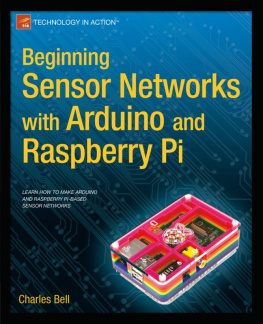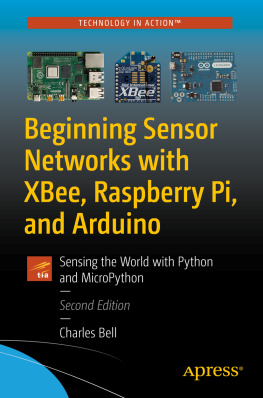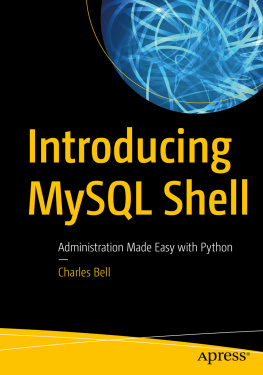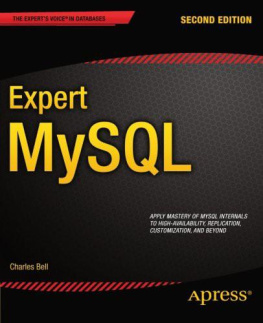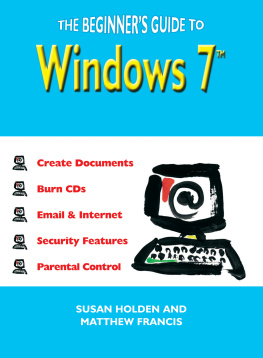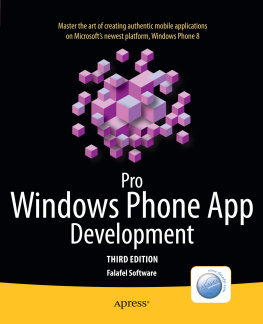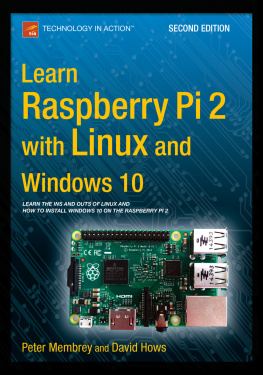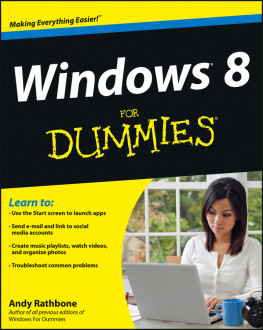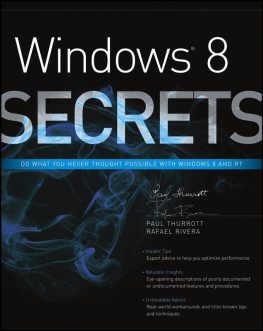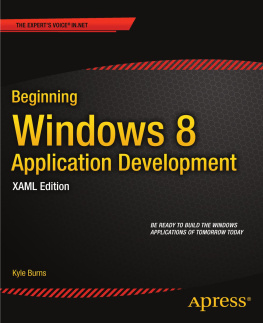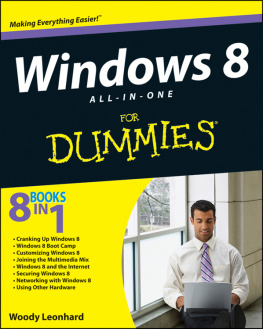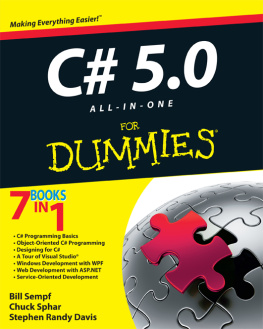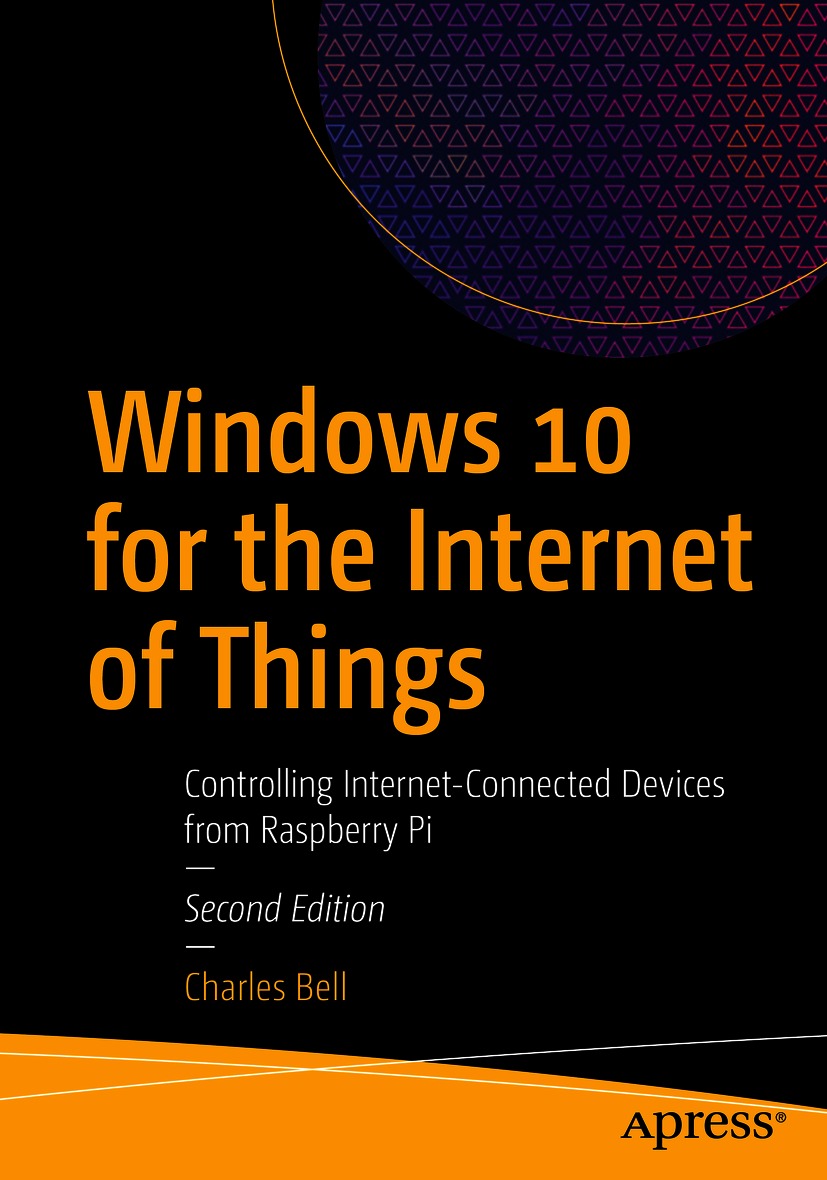Charles Bell
Warsaw, VA, USA
Any source code or other supplementary material referenced by the author in this book is available to readers on GitHub via the books product page, located at www.apress.com/9781484266083 . For more detailed information, please visit http://www.apress.com/source-code .
ISBN 978-1-4842-6608-3 e-ISBN 978-1-4842-6609-0
https://doi.org/10.1007/978-1-4842-6609-0
Charles Bell 2021
This work is subject to copyright. All rights are reserved by the Publisher, whether the whole or part of the material is concerned, specifically the rights of translation, reprinting, reuse of illustrations, recitation, broadcasting, reproduction on microfilms or in any other physical way, and transmission or information storage and retrieval, electronic adaptation, computer software, or by similar or dissimilar methodology now known or hereafter developed.
The use of general descriptive names, registered names, trademarks, service marks, etc. in this publication does not imply, even in the absence of a specific statement, that such names are exempt from the relevant protective laws and regulations and therefore free for general use.
The publisher, the authors and the editors are safe to assume that the advice and information in this book are believed to be true and accurate at the date of publication. Neither the publisher nor the authors or the editors give a warranty, expressed or implied, with respect to the material contained herein or for any errors or omissions that may have been made. The publisher remains neutral with regard to jurisdictional claims in published maps and institutional affiliations.
Distributed to the book trade worldwide by Springer Science+Business Media LLC, 1 New York Plaza, Suite 4600, New York, NY 10004. Phone 1-800-SPRINGER, fax (201) 348-4505, e-mail orders-ny@springer-sbm.com, or visit www.springeronline.com. Apress Media, LLC is a California LLC and the sole member (owner) is Springer Science + Business Media Finance Inc (SSBM Finance Inc). SSBM Finance Inc is a Delaware corporation.
Introduction
Internet of Things (IoT) solutions are not nearly as complicated as the name may seem to indicate. Indeed, the IoT is largely another name for what we have already been doing. You may have heard of connected devices or Internet-ready or even cloud-enabled. All of these refer to the same thingbe it a single device such as a toaster or a plant monitor or a complex, multidevice product like home automation solutions. They all share one thing in common: they can be accessed via the Internet to either display data or interact with the devices directly. The trick is applying knowledge of technologies to leverage them to the best advantages for your IoT solution. Until the release of Windows 10 IoT Core, those who use Windows wanting to experiment with IoT solutions and in particular hardware like the Raspberry Pi had to learn a new operating system in order to get started. That is no longer true! In this book, we explore how to leverage Windows 10 in your IoT solutions.
Intended Audience
I wrote this book to share my passion for IoT solutions and Windows 10. I especially wanted to show how anyone could use Windows 10 along with a low-cost computing board to create cool IoT projectsall without having to learn a new operating system!
The intended audience therefore includes anyone interested in learning how to use Windows 10 for IoT projects, such as hobbyists and enthusiasts, and even designers and engineers building commercial Windows 10based IoT solutions.
How This Book Is Structured
The book was written to guide the reader from a general knowledge of IoT to expertise in developing Windows 10 solutions for the IoT. The first several chapters cover general topics, which include a short introduction to the Internet of Things, the Windows 10 IoT Core technologies, and some of the available hardware for IoT. Additional chapters are primers on how to write IoT solutions in a variety of programming languages. Rather than focusing on a single language, which often forces readers unfamiliar with the language to learn new skills just to read the book, Ive included tutorials in a number of languages to make the book usable by more readers. Throughout the book are examples of how to implement IoT solutions in the various languages. As you will see, some languages are better suited for certain projects. The book contains five detailed and increasingly complex projects for you to explore and enjoy as you develop IoT solutions with Windows 10. The book also provides two chapters that show you how to work with Microsoft Azure to store and visualize your IoT data via a bonus sixth project. The book concludes with a look at how to grow beyond the material presented. An appendix listing the hardware components for each chapter is included for your convenience. The following is a brief overview of each chapter in this book:
Chapter, What Is the Internet of Things?: This chapter answers general questions about the IoT and how IoT solutions are constructed. You are introduced to some terminology describing the architecture of IoT solutions, and you are provided examples of well-known IoT solutions. The chapter concludes with a brief introduction to Windows 10.
Chapter, Introducing the Windows 10 IoT Core: This chapter presents a version of Windows 10 called the Windows 10 IoT Core that runs on low-cost computers, such as the Raspberry Pi. You discover the basic features of Windows 10, including how to prepare your PC and get started with Windows 10 on your device. You will also see how to boot up the Raspberry Pi with Windows 10!
Chapter, Introducing the Raspberry Pi: This chapter explores the Raspberry Pi and how to set up and configure it using the Linux operating system in order to understand the platform and supporting technologies. Youll also discover a few key concepts of how to work with Linux and get a brief look at writing Python scripts, which are used to write Windows 10 IoT applications in later chapters.
Chapter, Developing IoT Solutions with Windows 10: This chapter presents a demonstration on how to get started using Visual Studio 2019. The chapter introduces several Windows 10 IoT Corecompatible hardware boards, including the layout of the GPIO headers. The chapter demonstrates how to build, deploy, and test your first Windows 10 IoT Core application.
Chapter, Windows 10 IoT Development with C++: This chapter provides a crash course on the basics of C++ programming in Visual Studio, including an explanation of some of the most commonly used language features. As such, this chapter provides you with the skills that you need to understand the growing number of IoT project examples available on the Internet. The chapter concludes by walking through a C++ example project that shows you how to interact with hardware.

